Claire Cottrell
Colors Come and Go
- Peach
- Pink
- Pale Pink
- White
- Black
- Off-white
- Blue
- Pale Blue
- Yellow
- Green
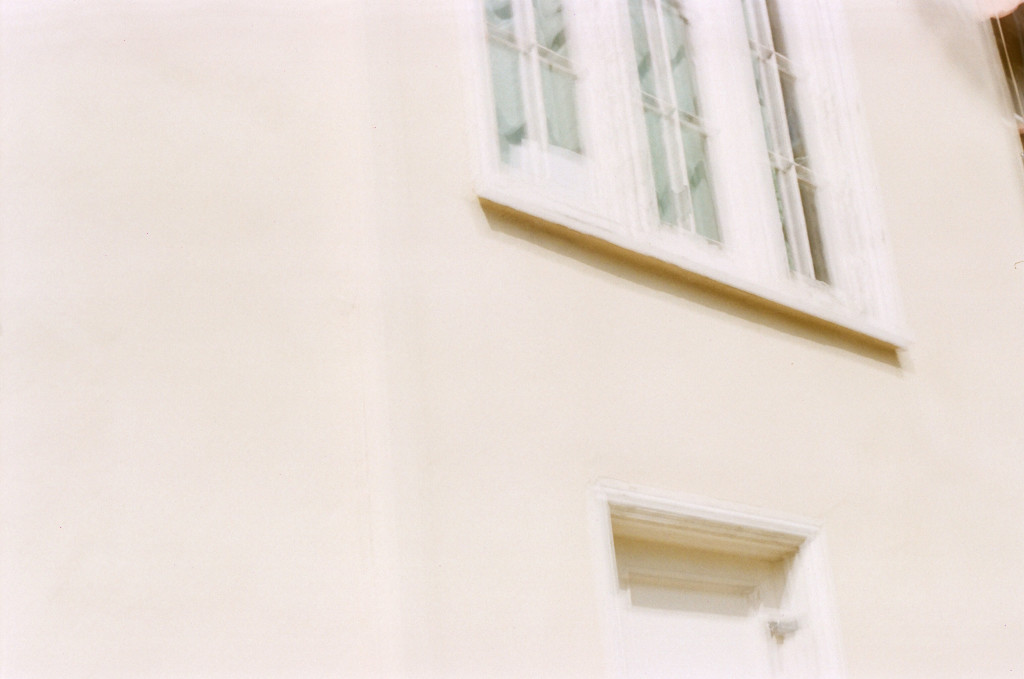
Peach
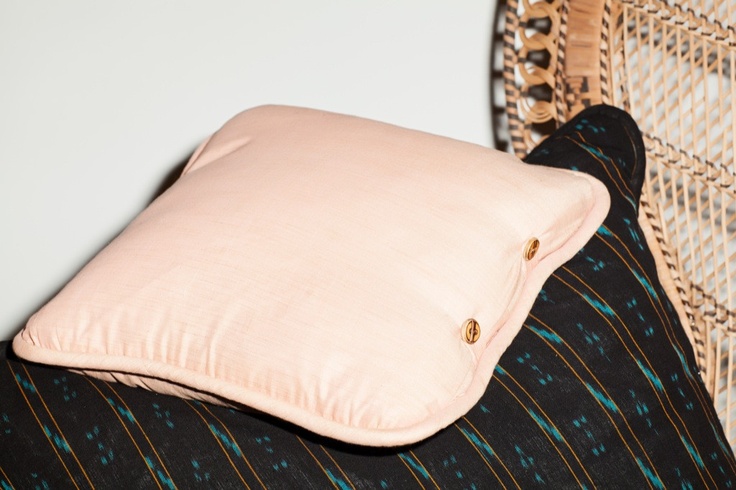
—— Electric Feathers Silk Tussah Pillow, 18"
I think in color and colors come and go, for me. But, some stick around. Oscar Wilde said “mere color, unspoiled by meaning, and unallied with definite form, can speak to the soul in a thousand different ways." Peach, or pale peach, is the color of (some) skin. It can be the color of California stucco. The web version is called Peach Puff. Crayola’s version is Deep Peach. Amanita muscaria var. persicina is a peach-colored mushroom. Marilyn Monroe’s letterhead was peach. Coco Chanel’s first skincare line, introduced in the 1930’s, was packaged in peach and black. In Chinese culture, the color peach represents immortality thanks to a mythological peach tree that bore fruit to the gods once every six thousand years. Because of that myth, peach is a common decoration on traditional birthday cakes and pastries in China. Electric Feathers’ Leana Zuniga did a pale peach pillow that I can’t stop thinking about.
Pink
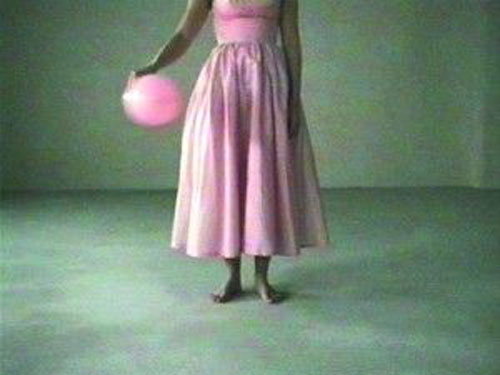
—— Chantal Michel, Art of Video: The Journey of the Immoble Man - Fondazione Ragghianti
Chantal Michel’s art is about loneliness, to me. In a video interview I found on YouTube she said “when I was little, I built my own house under my desk. I liked being alone in my own little world.” A few years ago she moved in to an abandoned castle in the Bernese Oberland in Switzerland. She stayed for three years for symbolic rent, whatever that means. She cleaned and painted day and night. She built her own world in the castle. On weekends she opened the doors and invited people in for dinner, or to stay the night. Some nights, she cooked for 100 people. In that same YouTube clip, she talked about her life and art being intertwined. I think about being alone. What that means. Because you can be with people and feel alone. You can be on your own and not feel alone. Most people who create, create alone. I think of artists in their studios, sitting on the floor, on a stool or maybe standing to work. I think of writers at their desk. There’s a lot of gazing out the window or staring in to space, or an equivalent. It’s a solitary act.
I wonder what the world around Chantal Michel’s little world was like.
Pale Pink
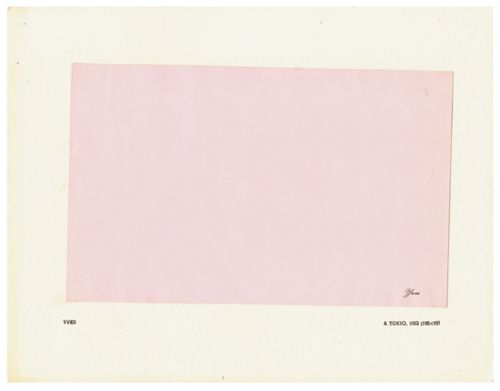
—— Yves Klein, Yves Peintures, 1954
In 1954, Yves Klein made a looseleaf booklet with ten color plates of monochrome paintings that didn’t exist. The Yves Klein Archives describes them as commercial samples of colored paper, tipped in and given arbitrary dimensions and locales: Tokyo, Madrid, Nice, Paris and London. Fictional monochrome artist book making tells me two things: make things up, and make things.
White
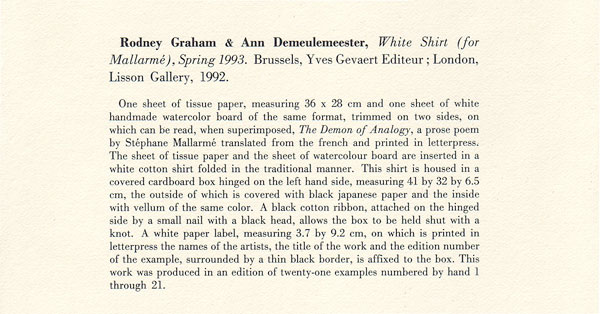
—— Rodney Graham & Ann Demeulemeester, White Shirt (for Mallarme), Spring 1993.
In the Spring of 1993, just after her first show in Paris, Ann Demeulemeester collaborated with the artist Rodney Graham to create a white shirt for the deceased French poet Stephane Mallarmé. This is about the attention to detail. The white handmade watercolor board. The shirt folded in the traditional manner. The box hinged on the left hand side. Not the right. The small nail with a black head. The knot. The twenty-one examples. The details are your voice. Your mind’s eye. I always think of Top Chef when I go down this rabbit hole : cook your food. You always have to cook your food. Or, you’ll go home.
Black
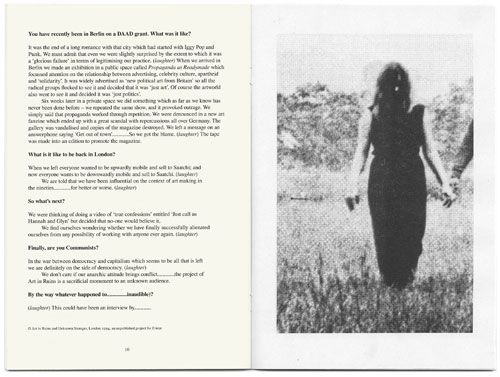
—— Eva Weinmayr, Art in Ruins and Unknown Stranger, London 1994.
In _Psychologie de la couleur, _Eva Heller writes that black "is the color most commonly associated with mourning, evil, magic, the end, violence, power, secrets and elegance."
In I Wonder What the Silence Was About, The artist Eva Weinmayr includes an unpublished 1994 _Frieze_interview by Art in Ruins, a bold British project formed by Hannah Vowles and Glyn Banks that challenged the art world as we know it today. They went quiet after - as Eva writes - a decade of high visibility. In a 2009 article for The Business of Fashion, Paris-based strategy company Agenda, Inc. writes about the power of invisibility: the right hand person to Martin Margiela once characterized the successful marketing strategy of Margiela as “absence equals presence” and a “cult of impersonality.” Secrets and elegance are powerful things.
Off-white
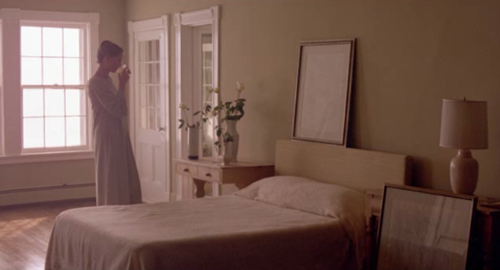
—— Woody Allen, dir., Interiors, 1994.
Mel Bourne and Daniel Robert created Woody Allen’s mid-90’s ode to off-white. The palette tells the story as much - if not more - than the words. Banality, calm, monotone, surrender, hovering at the end of the tunnel. Tell one story and let everything tell it. Am I telling one story? Is everything telling that story? They’re important questions to ask.
Blue
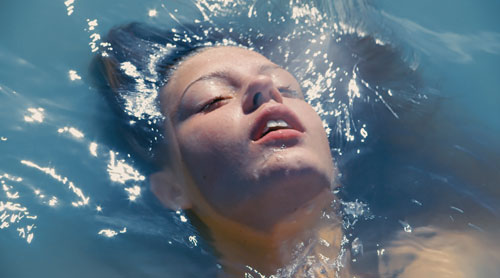
—— Abdellatif Kechiche, dir., Blue is the Warmest Color, 2013.
Blue is the Warmest Color was criticized for the sex scenes and for having a male point of view. But, Abdellatif Kechiche, the director, is male. Sofian El Fani, the cinematographer, is male. It’s a male lens, and - otherwise - it would be a very different film.
The French journalist, and now film director, Laurent Tirard interviewed Martin Scorcese in 1997. Scorcese talked about his teaching experience at Columbia University and said “the biggest problem of young filmmakers is that they have nothing to say. So I think the first thing you need to ask yourself if you want to make a film is “Do I have anything to say? And it doesn’t necessarily have to be something literal that can be expressed through words. Something you just want to communicate a feeling, an emotion.”
Kechiche made a film about love. A powerful, honest, heartbreaking film about love - from his perspective. It feels very personal. I think we understand his experience of love. That makes the criticism irrelevant, to me.
Pale Blue
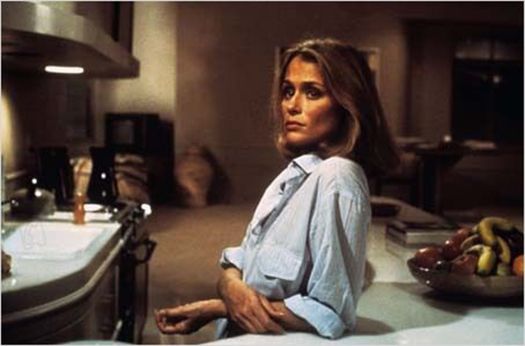
—— Lauren Hutton, American Gigolo, 1980; Haydée Politoff, La Collectionneuse, 1967.
Two color stories stand out in my mind: Lauren Hutton’s pale blue shirt in Paul Schrader’s _American Gigolo_and Haydée Politoff’s pale blue bikini in Eric Rohmer’s La Collectionneuse.
Notably, _American Gigolo w_as Giorgio Armani’s introduction to Hollywood. A decision he made eight years after opening his design office to promote his collections - and, for creative inspiration. He has since designed costumes for more than one hundred films. Politoff’s bikini might be her own. There is no wardrobe stylist or costume designer credited on the film, and Rohmer made _La Collectionneuse _for $60,000, all of which went to film stock and renting a house in St. Tropez. These pale blue moments were early days in both Armani and Rohmer’s careers; they are reminders of the importance of creative marketing and working with what you have.
Yellow
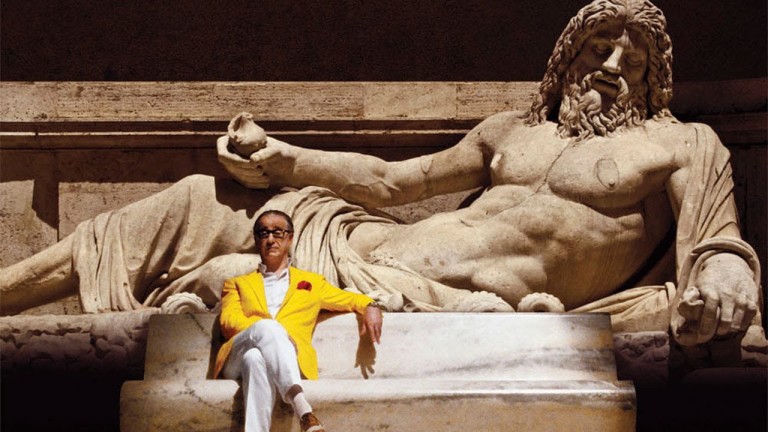
—— Paolo Sorrentino, dir., The Great Beauty, 2013.
The Great Beauty captures the complexities of life, love, loss, society, art, religion but maintains the humour and imaginative, poetic splendor of it all. It begins with a quote from Journey to the End of the Night, the first novel of Louis-Ferdinand Céline, a French writer, pamphleteer and physician: "To travel is very useful, it makes the imagination work, the rest is just delusion and pain. Our journey is entirely imaginary, which is its strength." Yoko Ono said “smile in the mirror. Do that every morning and you’ll start to see a big difference in your life.” Humour, travel and smiling.
Green
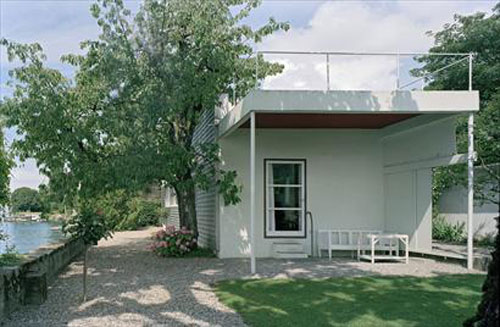
—— Le Corbusier, Villa Le Lac, Corseaux, Switzerland.
François Truffaut’s 1970 film The Wild Child opens with the statement: “This story is authentic: it opens in 1798 in a French forest.” Living in and around nature keeps you honest, and grounded. It lets your mind be free. Le Corbusier believed in “space and light and order. Those are the things that men need just as much as they need bread or a place to sleep.” He designed a small house for his parents on the shore of Lake Geneva with a ribbon window that explains the land on the edge of a lake and the magnitude of the outdoors. Live in nature, even in a city. Notice the birds and the trees and the water and the light of the day. Your story will be authentic.
Claire Cottrell
Claire Cottrell is a film director and photographer. She is the founder of BOOK STAND. She is the Los Angeles editor of Berlin-based international interview magazine, Freunde von Freunden. She has contributed to The Atlantic, the Paris Review, VICE and Wilder Quarterly on the subjects of art, fashion, film, design and plant life. Her work has been featured in Vogue, T: The New York Times Style Magazine and purple FASHION, to name a few. Currently, she is publishing a series of art books inspired by Gallimard’s Blanche collection, starting a short documentary about printed matter, finishing a video about hands and the things we hold on to and planning a summer get-together in a beautiful outdoor space in Berlin.
